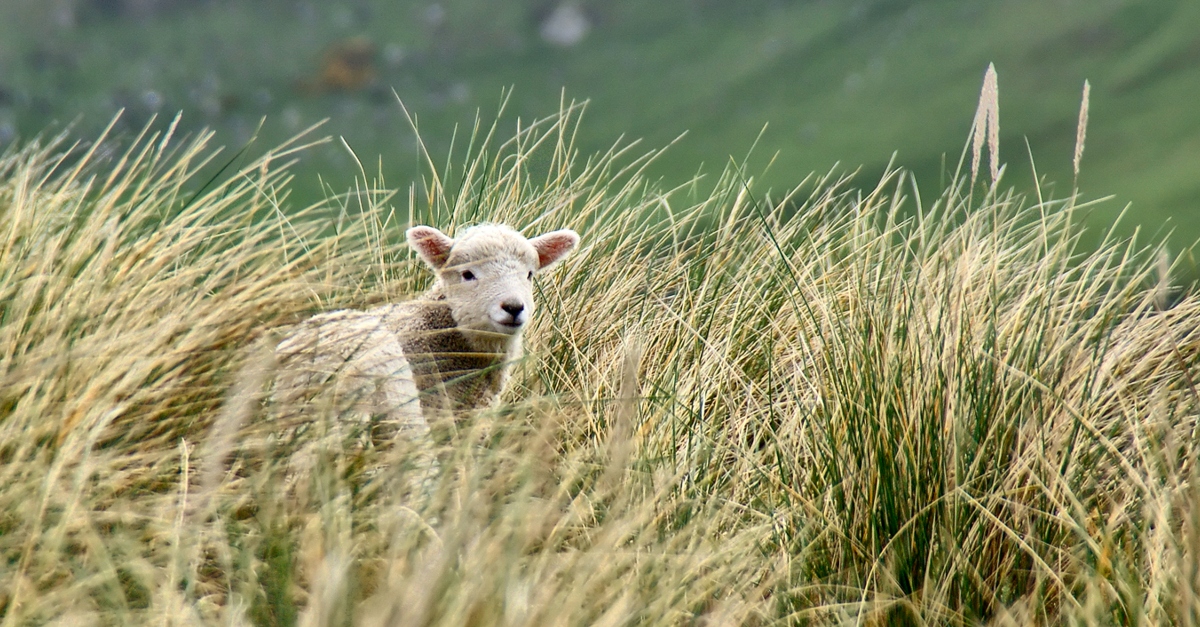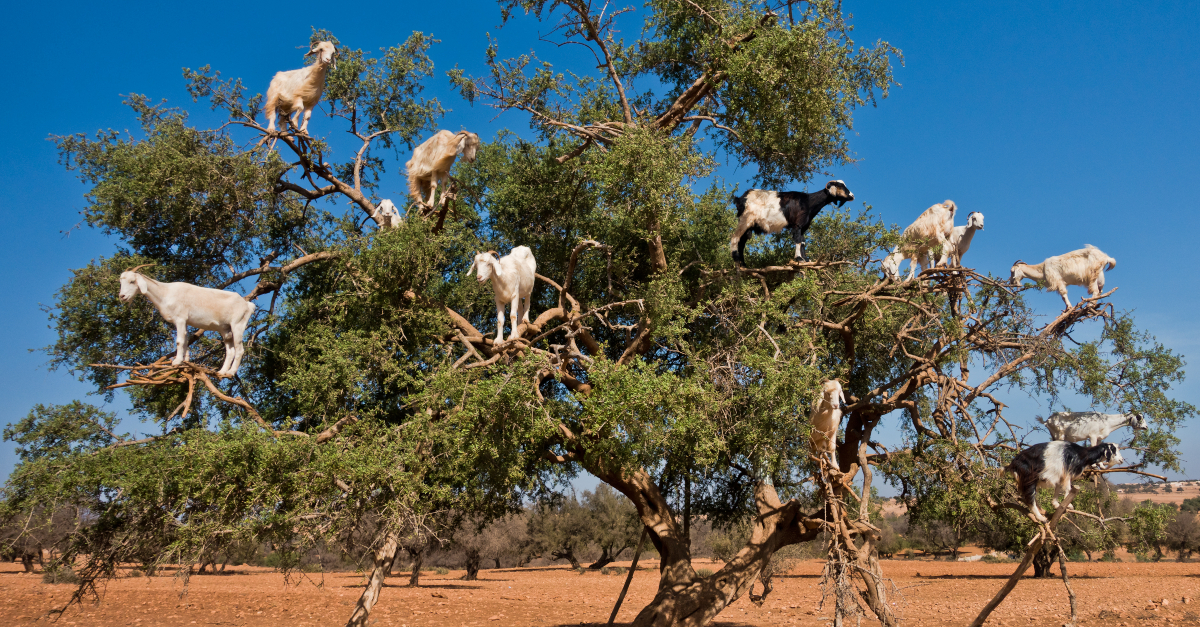Why Is Satan Depicted as a Goat in Scripture?

Even if we haven’t had a chance to explore Scripture much, we understand that sheep tend to have good, heavenly connotations. And goats have, well, the opposite. Besides the goats of Mount Gilead verse in Song of Solomon 4, we don’t really see goats having a positive connotation in Scripture.
For those of us familiar with images of the occult, we often know that they will use a goat, especially those in Satanism circles. So why does the creature of a goat represent the devil? Didn’t he appear as a serpent in the Garden of Eden (Genesis 3)?
In this article, we’ll explore the symbolism of goats in Scripture, what Scripture has to say about goats versus sheep, and why Satan is ultimately a goat.
What Do Goats Symbolize in Scripture?
Goats represent a number of things in Scripture, but to go to the source, we need to explore one of the most famous Jewish Holidays: Yom Kippur, otherwise known as The Day of Atonement.
During this holiday, two goats would be used (Leviticus 16). One, the azazel goat, would have all the sins symbolically placed on it when the high priest laid hands on it. Once the sins “were placed” they would drive the goat out into the desert, thus driving out Israel’s sins into the desert. For more information on the two goats used during Yom Kippur, check out this article here.
The goat here, the azazel goat, represented Satan, or evil. No wonder Jesus found Satan out in the desert (Matthew 4:1-11). Deserts represent cursed places, devoid of God’s blessing. God’s blessing often comes through the form of rain.
Azazel is a much debated topic, but many believed it to be a desert demon or force of evil out in the desert.
Apart from the scapegoat azazel, where do we find goat symbolism in Scripture?
Aside from the Matthew parable we will discuss in a moment about the goats on the left and the lambs on the right, Scripture doesn’t have many explicit negative connotations for goats. For those, we have to explore what they mean in paganism.
The Norse religions used goats in worship, including Thor’s chariot being driven by horses. Pan, the Greek satyr, had temples. And, of course, we can’t forget Baphomet who makes an appearance during the Middle Ages and has stuck around since.
Even if we exclude goats and how they’ve played a role in pagan worship, we do need to observe how the scapegoat plays a large role in Yom Kippur and essentially personifies evil.
Sites of religions of the occult glorify the goat for this reason, because of what it represents.

What About Baphomet?
We’ve often heard of goats being associated with witchcraft and Satan himself. The Bible never seems to have many good things to say about this creature (Matthew 25:31-46), so it should come as no surprise that one of the statues of the Satanic temple, known as Baphomet, has a goat’s head. The Baphomet is a goat-like man that was originally created in 1856 by Éliphas Lévi as an occultic symbol of balance. It became expressly associated with Satanism when it appeared as a depiction of the devil in a tarot card deck.
The Baphomet was later adopted as an identifying symbol by the movement of Satanism at large. (excerpt provided by Christianity.com: Baphomet)
How Are Goats Different than Sheep?
The Bible does seem to draw distinctions between these two livestock, especially in a parable that we will discuss in the next section.
So what actually differs these two from one another?
Apart from the fact they look different, the characteristics of these animals may hint at the reasons why believers are sheep and unbelievers are goats.
Sheep are dependent on their shepherd. They have a reputation for not topping the lists of the most intelligent animals, but they do trust and depend on their shepherd. Goats on the other hand have a reputation for self-reliance and stubbornness. This could, perhaps, reflect the worldly idea of leaning on one’s self for support and guidance, rather than God.
Goats also have destructive tendencies. As the article in the previous paragraph linked says, “Shepherds protect sheep from their environment, whereas goatherds protect the environment from their goats.”
We can draw an obvious parallel that Christians seek to usher in Shalom as we await for the arrival of Christ. Non-believers, instead, head down paths of destruction, whether intentional or not.
Physiologically sheep and goats do look somewhat similar.
If we didn’t have the savvy of a shepherd, we may mix up the two. That’s why this article also argues that perhaps the sheep and the goats in Scripture not only represent believers and unbelievers, but believers and imposters. We hear countless stories of so-called “Christians” who divide churches, commit apostasy, and lead a great many away from the faith.
That’s why we must determine the difference between these two. Because although the two animals look similar, they act very differently.
What Does the Bible Say about Goats?
I want to highlight one passage in particular that often makes people think of sheep vs. goats.
When the Son of Man comes in his glory, and all the angels with him, then he will sit on his glorious throne. Before him will be gathered all the nations, and he will separate people one from another as a shepherd separates the sheep from the goats. And he will place the sheep on his right, but the goats on the left. Then the King will say to those on his right, ‘Come, you who are blessed by my Father, inherit the kingdom prepared for you from the foundation of the world. For I was hungry and you gave me food, I was thirsty and you gave me drink, I was a stranger and you welcomed me. – Matthew 25:31-46
The “goats” in this passage experience eternal judgment. The sheep enter eternal life. We do have to make note that the two must be separated, meaning the sheep could not tell the goats apart from the sheep. Scripture often talks about this separation in a number of ways, such as the wheat from the chaff, the weeds from the wheat, etc.
Daniel also has a vision of a goat (Alexander the Great, Daniel 8), that conquers and wreaks destruction. The Bible does not use this symbol lightly. Alexander ushered in Hellenism that sought to destroy the Jewish world and everything they stood for.

4 Reasons Satan Is a Goat
From the above research, we can derive four reasons why Satan is represented as a goat.
1. Pagan Religions Use Goat Imagery
As we mentioned before, anything from Norse religions to Greek incorporated goats as objects of worship. Now, in Satanist circles, they worship Baphomet and often glorify imagery of goats, as goats represent stubbornness and evil.
2. Goats Exemplify Self-Reliance and Destruction
A shepherd has control over his flock, a goat herder does not. If a goat herder doesn’t keep a vigilant eye on his goats, he may allow them to harm the other animals, such as cases of goats chewing off horse’s tails.
They escape enclosures and destroy landscaping.
3. The Goats Scatter the Sheep
As we noted in the Matthew passage above, God has to separate the sheep and goats. That means goats have infiltrated the church and Christian circles.
Imposter Christians can appear as physiologically close to a sheep for a while, but in the end, a goat is a goat and a sheep is a sheep.
4. Jewish Religious Practices Equate Goats with Evil
Yom Kippur would place all the sins on a scapegoat and drive it out into the desert, the azazel goat. Azazel represented evil. It represented a desert demon or desert evil of some sort.
Conclusion
The harmful anti-gospel of the goats may catch us by surprise. It may ask us to rely on ourselves and exercise stubbornness. It may glorify destructive behaviors.
And if we don’t exercise vigilance, we may find that the goat gospel looks nearly identical to the sheep one. Therefore, we must turn to the Shepherd and trust in his words and guidance.
Recommended for You:
5 Things Christians Should Know about the Day of Atonement
Why Jesus Shares a Parable of Wheat and Tares in Matthew
Keep an Eye Out for These Signs of a False Prophet
5 Areas of Your Life Satan Wants to Enter
Photo Credit: ©Getty Images/mihtiander
Hope Bolinger is an acquisitions editor at End Game Press, book editor for hire, and the author of almost 30 books. More than 1500 of her works have been featured in various publications. Check out her books at hopebolinger.com for clean books in most genres, great for adults and kids. Check out her editing profile at Reedsy.com to find out about hiring her for your next book project.
This article is part of our larger resource library of Christian questions important to the Christian faith. From core beliefs to what the Bible says about angels, we want to provide easy to read and understand articles that answer your questions about Christian living.
What Do Christians Believe?
Is Gambling a Sin?
Is Drinking Alcohol a Sin?
What Does God Look Like?
Are Guardian Angels Real?
What is Heaven Like?
Originally published October 12, 2020.





